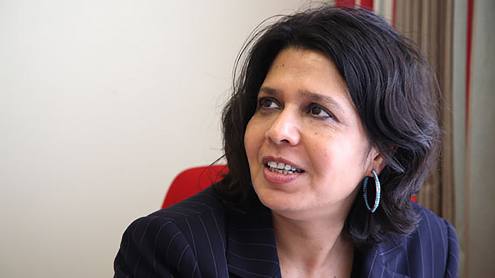Banks are moving towards being lifestyle choices rather than payments processors. Historically, we chose a bank because it was physically close to our home. It did not matter what they charged or how they priced, as all banks were essentially the same. We did not care much about their branding, but only if we liked the people in branch.
Editor's choice
Over the years, as banks retrenched and pushed us to do more of our banking outside of the branch, they have become even less differentiated. Now, most people are still picking their banks because they are close – more than 60% of new account openers made their decision based on location – but, once opened, they never visit the branch again.
Putting banking in context
Soon, as the dynamics of the role of the branch shift and it becomes less important, customers will stop opening accounts due to the proximity of the branch and will move towards making their decision based on lifestyle choices, asking how does the bank reflect my personality, needs and goals? Do they share common ethics and values with me? Do they fit my lifestyle and outlook?
These questions rarely impact our decisions today – when the headlines about Barclays involvement in the Libor fixing scandal hit, many people said they would close their accounts, but the proportion of customers that actually did was minuscule. But they will become more important tomorrow, particularly as we see more confident and competent customers, digitally native, immersing themselves online.
This is when banks will see a new relationship forming; one that is screen to screen rather than face to face. A screen-to-screen relationship is very different, and will see customers demanding a contextual relationship, which relates to the consumer through their devices, chips and lifestyle, not just through data analytics and push marketing.
A contextual relationship will use the internet of things to sense when to make a credit or loan offer, but extends further and deeper than this. A contextual relationship will be intimate and will use deep data analytics to track our digital footprints. It will only relate to us on a permissions basis and will focus upon the context of the relationships, not just the permission.
It would be easy to push a credit offer at a customer 10 times a day, but the contextual relationship will know just when that offer is good to be made. A contextual relationship will sense the consumer's needs and recognise when is a good time to talk. A contextual relationship will drill deep down into the kind of things a consumer buys, connect the consumer with people that buy like them, and will support them in purchasing more of the things they buy. But the real lifestyle choice bank goes one step deeper than all of this, and connects to the consumer with relevance to their lifestyle.
These banks will be truly differentiated as they will recognise that I want more than just to be marketed to in order to increase my share of wallet. These banks will recognise that the new bank, the lifestyle choice bank, shares common views and is relevant in the context of the relationship.
Lifestyle choices
What is a relevant bank?
A relevant bank is one that informs, educates and empathises with me through communications in the place I am at – namely my social space. Most banks talk about social media as a marketing thing – well, it is media – rather than as a customer connection process. That is where the really differentiated banks of tomorrow will sit: providing relevance in the context of where the customer sees the relationship, and relationships are in the social space, not in the branch.
We can already see banks in the early days of developing a social context to be relevant as a lifestyle choice, with the leading name in this space being German lender Fidor. I often talk about Fidor’s experiments with Facebook, to gain 'likes' for example, but the reason I do this is because it was the first bank I saw using the social space as its main space to build lifestyle relationships.
It is this thinking that will become the differentiated lifestyle choice for customers selecting banks. It will not be brand or size or branch, but do they fit in with the way I think? That’s what Fidor does when it is 'liked' on Facebook. It talks to customers in an adult way about money. It is also what ICICI Bank is doing in India with its social outreach programme and it is what many banks will be doing in the future.
Banks will become social beasts, providing social outreach to gain social relationships in social spaces. Customers will choose their banks based upon their social outreach, relevance and synchronisation with their lifestyle views. It is just a matter of time.
Chris Skinner is an independent financial commentator and chairman of the London-based Financial Services Club.






